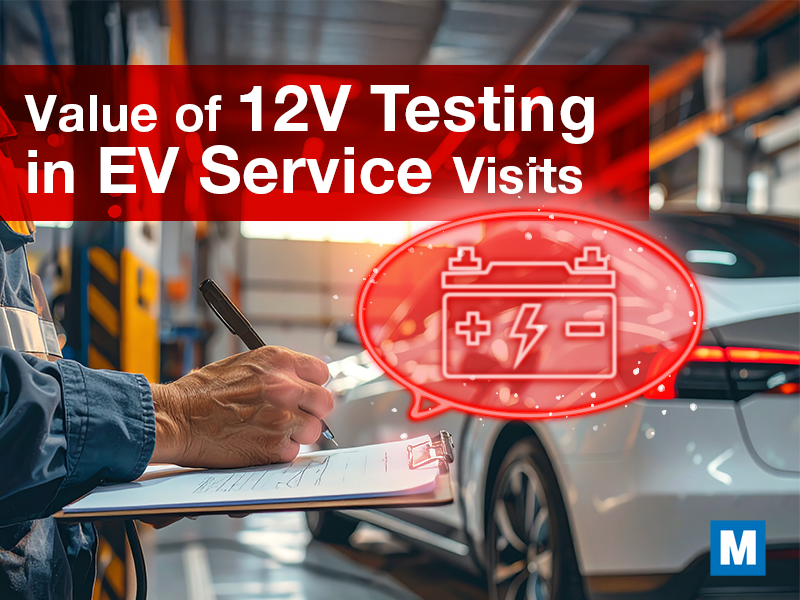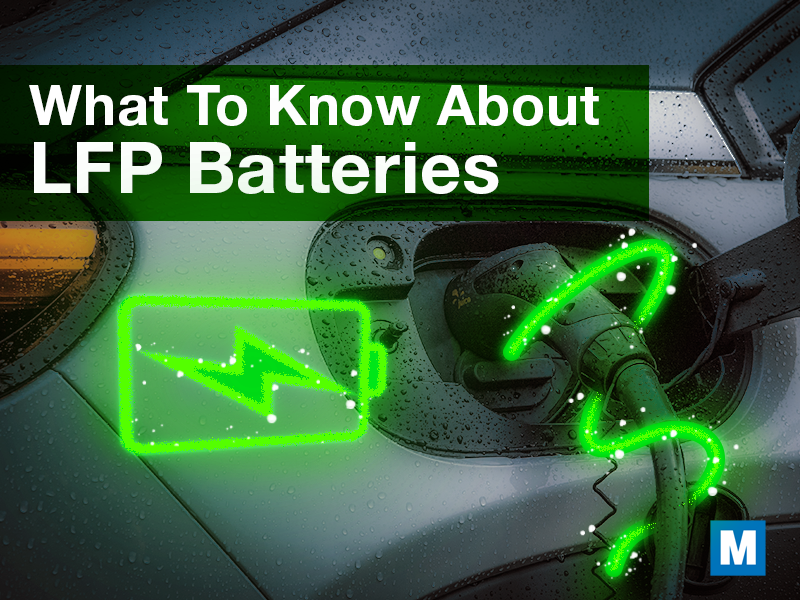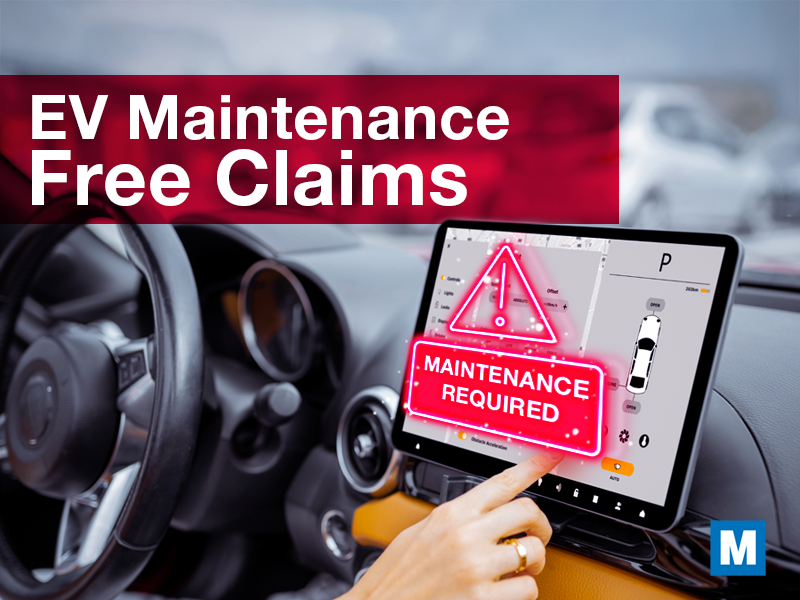EVs drive on high voltage, but they wake up on 12 volts. The 12V battery powers the brains, closes the main relays, and lets the vehicle talk to a charger. If it is weak, the car can seem dead, refuse to charge, throw random faults, or act like software is broken.
A fast 12V test at intake turns confusion into a simple plan. It prevents high-voltage wild goose chases, saves the customer money, and helps your shop deliver first-time fixes. There’s more value than meets the eye to the consumer and a new technician who pushes back against routine change, but it’s easily explained.
What the 12V System Does in an EV
Before the traction pack does anything, the car must boot. The 12V battery powers the BMS, safety systems, ECUs, telematics, and the cluster. It also runs lighting, locks, airbags, ABS, and the systems that allow charging. With low 12V, contactors may not close and pre-charge can fail. The charge port may not handshake with the station. To a driver, it looks like a dead station or a bad update that’s ‘bricking’ their car. To a technician, it’s a reminder that 12V is the gatekeeper. If the gatekeeper is weak, nothing behaves.
12V problems often copy high-voltage problems: slow wakeups, deep sleep that ignores the app, “Christmas tree” clusters after OTA updates, and no-charge complaints with no clear code. Many begin with a tired 12V battery or poor grounds. This is why a quick 12V health check should start every EV visit.
Common Customer Complaints that Start with 12V
For anyone who works in a shop dealing with EVs, these aren’t going to be new complaints to your ears:
- “It will not charge at home.” If 12V voltage sags during the handshake, charging never starts.
- “Random errors after an update.” Software programming loads the 12V system. A problem with OTA updates can make modules drop offline.
- “Cold morning no-start.” Low temperatures slow chemistry and expose weak batteries, even with a full HV battery.
- “Infotainment resets and weirdly cycling locks.” It’s often a 12V or ground issue, not a high-voltage fault.
In an EV the 12V system is not secondary. It’s the foundation that makes every other system possible.
The Right Time to Test 12V During an EV Visit
Test the 12-volt battery at intake every time. It takes minutes and gives you a baseline before any high-voltage work. Always test for charging complaints, range complaints with no obvious cause, warning lights after an update, and any visit after long storage.
Include a 12V test and a quick DC/DC check in used EV and CPO inspections. Test during seasonal services since heat speeds aging, and cold reveals weakness. Test after accessory installs such as dash cams or trackers, which can add parasitic draw.
If you’re wondering if it’s a good time to test or not, the answer is always to test it anyway.
A Simple, Repeatable 12V Testing Workflow
Keep it consistent and fast. Technicians don’t want to invest more time in a diagnostic that isn’t adding to their hours, and customers don’t want their service visit extended needlessly.
- Visual pre-check. Look for clean, tight terminals and healthy grounds. Confirm the battery is secured, and note any recent usage patterns. If the vehicle was just driven or charged, remove the surface charge with a brief headlight load.
- In-vehicle test. Use a quality conductance and voltage tester for the battery chemistry the vehicle’s equipped with. Record resting voltage and health. If available, run a cranking simulation or similar stress test to see how the battery holds under load.
- Verify the DC/DC converter. Key on as needed and confirm charge voltage. Add a load with lights and HVAC to check regulation. A weak converter will send a good battery home to fail again.
- Match symptoms to results. If the report looks fine but the vehicle sleeps too deeply, check for draw with a clamp on a cable. If needed, schedule a deeper parasitic draw test.
- Document in your DVI or shop system. Give the advisor a clear, plain-language summary. For example, “12V battery at 43 percent health and failed under load. Recommend replacement to prevent no-charge and no-start.”
How 12V Testing Protects the Shop and the Customer
Starting with 12V testing saves hours that would be wasted on the wrong system. It reduces comebacks from “good today, dead tomorrow” because you catch marginal batteries before weather or updates expose them.
Time-stamped reports support warranty and justify decisions to OEM reps and customers. Clear proof builds trust. Customers approve work more easily when they can see a report instead of hearing a hunch. For fleets, routine 12V testing creates simple trend reports so replacements can be planned during downtime instead of on the road.
Tools, Training, and Setup that Make this Easy
You likely have most of what you need already if you have Midtronics’ latest testers. Use an in-vehicle battery tester with EV-friendly workflows, and keep insulated torque tools for terminals, terminal brushes, and ground service supplies on a cart. Create a short technician playbook that covers intake test steps, a quick DC/DC check, and when to escalate the problem to draw testing. Give service advisors a one-page cheat sheet with simple phrases that explain test results without jargon.
Place the 12V test where it cannot be skipped, intentionally or otherwise. Add it to the multipoint inspection at intake, then attach the test report to the job in your digital inspection with a clear recommendation. Once it’s part of the routine, your team spends less time explaining strange behavior and more time fixing the right thing.
Next Steps
The 12V system is the doorman for the whole EV. When it’s healthy, the car wakes, talks to the charger, runs safety systems, and lets you diagnose real high-voltage issues. When it’s weak, the visit gets confusing. Make a quick 12V test the first step in every EV service.
To get started, add intake 12V testing to all EV visits and to every charging complaint. Train techs on a simple workflow and train advisors to explain results in 30 seconds or less. Pull reports into your digital inspection or shop software so you have a clear record for the customer and for warranty.




